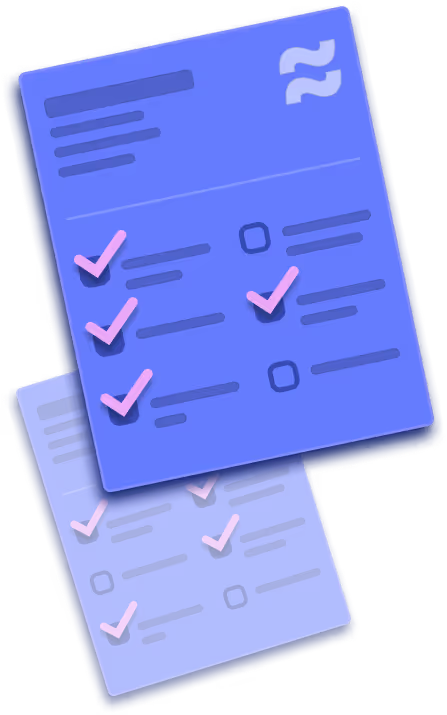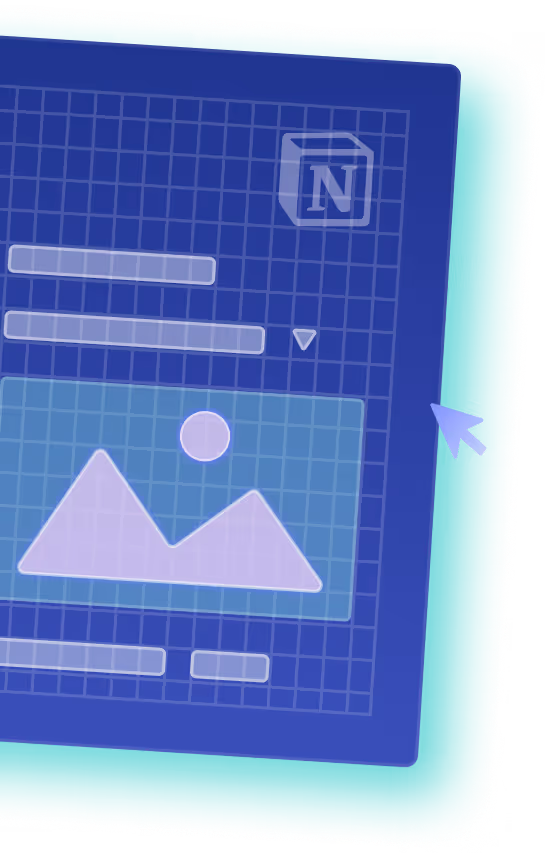-min.png)
Why EdTech Websites Struggle With Engagement
Key takeaways
- Most engagement problems start with vague messaging and weak UX.
- If the journey isn’t clear, users drop before the second click.
- Clunky interfaces and broken CTAs kill momentum fast.
- No retention loops mean no repeat visits.
- A clean Webflow build removes friction and keeps users engaged.
EdTech websites are notorious for the overall lack of engagement from their visitors and users. Take Massive Open Online Courses (MOOCs) such as Coursera, for example. These boast high traffic volumes and massive libraries of courses, but the completion rate at MOOCs is as low as 10-15%. The usual culprits for pushing the users away are cluttered navigation, one-size-fits-all messaging, static content, and confusing conversion paths. Even platforms with strong missions and funding can’t afford that kind of churn.
In this article, we’ll break down the most common engagement struggles facing EdTech websites today and outline the structural shifts needed to turn passive visitors into active, returning learners.
The Most Common Reasons for Engagement Struggles in EdTech Websites
Bad content is not the reason why EdTech sites struggle. It’s the overall UX that makes it so easy for users to leave. Let’s take a closer look.
Unclear Value Proposition
A lot of EdTech websites lead with vague, feel-good statements like “Helping users thrive” or “Education reimagined”. While these all sound fine and dandy, it doesn’t actually tell visitors what the platform does, who it’s for, or why they should care. Most users make up their mind about a site in seconds. If the offer isn’t obvious, they bounce before scrolling.
Even Duolingo has made a change for the worse in that regard with the latest slogan, “Learn a language for free. Forever”. There is still a unique selling point in claiming that it is free, but other than that, users don’t have much to go on.
Fragmented User Journeys
If your website treats every visitor the same, you’re bleeding engagement. A parent, a student, and a teacher don’t share the same goals, but somehow websites treat them all with a single, generic flow. That will have them wondering about their next step, and it’s usually going for the exit sign.
Look at italki. If you land there as a potential instructor or enterprise client, the primary focus is still on students. It’s all about student-focused messaging, even when the visitor is a parent searching for structure or a company exploring training options. The signal to those users is simple: this isn’t for you.
If your site works the same way, you’re losing qualified traffic before they’ve even hit the second page. Precise audience segmentation keeps the right people on the site and moving forward.
Poor UX and Mobile Experience
If your site loads slowly, looks cluttered, or feels clunky on mobile, you’re already losing a chunk of your audience. For many EdTech platforms, this isn’t a minor issue. It’s the main reason why people leave the site.
This problem usually shows up in a few predictable ways:
- Slow page load speeds, especially on mobile
- Confusing or inconsistent navigation
- CTAs buried under visual noise
- Dashboards that look like a developer’s tool, not a learning space
- Pages breaking or resizing awkwardly on smaller screens
If your users have to fight the interface to learn, they won’t stick around, so it’s crucial to ensure the design you employ is made for scaling and users alike.
Broken Conversion Paths
EdTech sites tend to either bury CTAs at the bottom of the pages or have too many of them. Plus, there’s the overloading of users with multiple steps they need to complete before getting to the service, all of which introduces friction right when interest peaks.
edX is a clear example of this with its master’s courses. After scrolling through multiple sections explaining the program, and we looked at the edX’s Master’s in communications course, its structure, and even the faculty, there’s often no clear CTA at the end of the page. No “Enroll now.” No “Start your application.” Just more text.
A user who’s made it that far has already invested time and attention. If the only option is to scroll back up or click through multiple menus, most won’t. They’ll leave. When the conversion path isn’t direct, interest dies on the page.
No Retention Loops
If your platform doesn’t give users a reason to return, they won’t. This is where many EdTech websites quietly fail. They convert a visitor once and then disappear from their lives. No reminders. No personalised progress. No structured next step.
If your site isn’t creating loops through progress tracking, milestones, recommendations, or reminders, you’re depending on chance for retention. And chance isn’t a strategy.
Disjointed Tech Stack
The more tools you have on your website, the more users will feel it. How? Easy. Slow pages, broken logins, inconsistent design, and tracking gaps all chip away at engagement. Even a slight delay in load time can push bounce rates up dramatically.
Say yours runs on WordPress with an LMS plugin, and features a separate checkout tool, and a mess of integrations in between, which come with delays. It will probably work early on, but is bound to collapse as traffic grows. Every update risks breaking something, and every second lost costs conversions.
Building for Engagement: A Modern Approach
To fix engagement issues of your EdTech website, go to the foundations. If your website isn’t fast, transparent, and flexible, everything else is just decoration, so that’s why shoring up the existing structure won’t cut it.
Webflow is a good example of how to solve these issues structurally, not reactively. It removes the need for five different tools stitched together and lets teams design, build, and ship engagement-focused experiences in one place. That matters because:
- Speed is built in: Webflow’s hosting and lightweight front-end keep load times low, which directly impacts bounce rates.
- Consistent design creates trust: You’re not juggling mismatched templates from plugins. Every page looks and behaves the same, which smooths the user journey.
- Responsiveness isn’t an afterthought: Sites automatically adapt across devices, solving one of the biggest drop-off points in EdTech and showcasing the full power of Webflow responsiveness.
- Marketing teams can move fast: Pages, CTAs, or entire flows can be changed without a developer sprint. That means faster iteration and fewer leaks in conversion paths.
- Personalisation and interactivity scale: Embeds, integrations, and CMS tools make it easier to build demos, onboarding flows, and nudges that keep learners engaged.
We have seen that fixing engagement isn’t about piling on more tools to the existing platform that is not working. Mind you that the goal here wasn’t to pit Webflow against Wordpress for the sake of it. The same applies to any other CMS.
It’s about removing the friction that pushes users away. A unified, flexible platform like Webflow makes that possible by bringing speed, design consistency, responsiveness, and iteration under one roof.
Conclusion
We’ve seen that Fixing engagement means focusing on changing the structure. The design must blend perfectly with the backend to deliver speed, clarity, and consistency. That’s exactly where Flow Ninja comes in. By designing and building Webflow experiences that strip out unnecessary friction, we help EdTech brands keep users engaged, not just get them through the door.
If your platform is losing traffic it’s already paid to acquire, it’s time to rethink the experience. Let’s build something users want to stay on.
FAQ
Why do EdTech websites lose users so quickly?
EdTech websites lose users because the UX isn’t built to hold their attention. If the messaging is vague, the UX clunky, or the next step unclear, people will bounce, no matter how good the content is or what the site offers.
What’s the most common engagement mistake?
Treating every visitor the same. Parents, students, and institutional buyers all have different needs. Generic flows create confusion, not conversions.
How do conversion paths affect engagement?
A weak conversion flow kills momentum. If users have to dig for CTAs or navigate too many steps, even high-intent visitors won’t convert.
What can be done to improve retention?
To improve retention, EdTech sites need a structure revamp. Adding tools and features like progress tracking, nudges, and personalised experiences will keep users coming back. Without them, engagement is a one-time event.
How does Flow Ninja help solve these problems?
Flow Ninja builds high-performing Webflow sites with speed, functionality, and simple CMS control that are a prerequisite for a clear, intuitive user journeys. That turns passive traffic into active, returning users.






.svg)















.png)
.png)
.png)








.svg)

.png)
.png)
.webp)
.svg)

